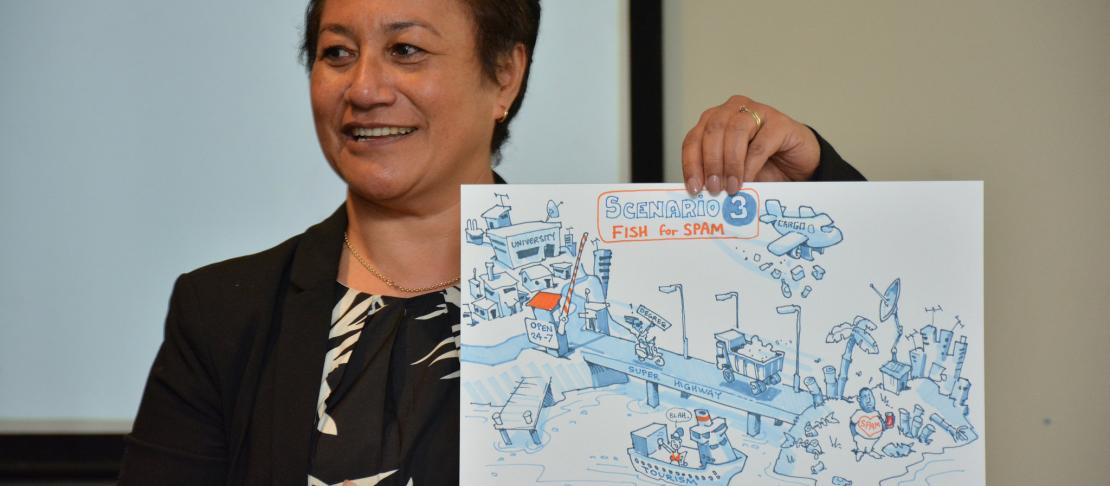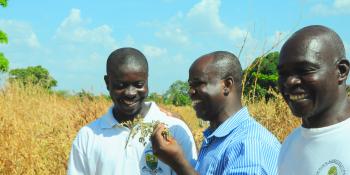Best practices for scientists working with policymakers

Lessons from CCAFS projects on bridging the science-policy divide for climate change action in developing country agriculture.
Decision-makers in developing countries need evidence of what impacts climate change is having on agriculture and food systems and how to help people cope with these impacts. Even though research-for-development scientists are generating this evidence, the research might not always be what decision-makers want or need; research outputs are not always designed in a way to facilitate ease of use for policy actors.
I co-authored a working paper with other scientists from the CGIAR Research Program on Climate Change, Agriculture and Food Security (CCAFS) on how best to bridge this divide between scientists and policymakers, drawing lessons from CCAFS projects involved in policy engagement work. As part of our study, we conducted interviews with project leaders, other CCAFS-related staff involved in the projects and key partners in government.
The most effective means of science-policy engagement
Our study highlights that involving decision-makers in the research process from the very beginning is crucial so that knowledge can be co-created and therefore meet the needs of the decision-makers. Creating spaces for interaction between researchers and policymakers helps throughout the process of food security policy change. For example, learning alliances and science-policy dialogue forums created through CCAFS projects have proved successful in bringing together various actors from multiple sectors to integrate scientific findings into evidence-based policies.
One of the other key lessons from the CCAFS projects was that, rather than starting from scratch or trying to force review or revision of a policy that was not on anyone’s agenda, it was better to start by getting involved in a process that was already underway and to look at how CCAFS could provide support and evidence.
Interaction from the beginning of the project
Critical to achieving outcomes, which in this case is the use of scientific findings in improved policies, is the ability to respond to needs of policymakers. By involving them from the beginning of a project, researchers can understand how to best meet their needs. Producing products that do not speak to the needs of policymakers is not useful in policy-oriented research.
On the other hand, one of the major constraints mentioned by several project staff was funding stability for carrying out the planned work. Involving decision-makers from the beginning instead of saving engagement to the end of the research project can help to avoid the complete loss of possible outcomes if funding is reduced part-way through a project. If engagement is only planned as the final activity in the last year of a project and then funding is cut, the interaction with decision-makers will suffer.
Competing priorities and mismatched timelines
Another constraint mentioned in the interviews was the availability of decision-makers to attend meetings and participate in project activities. Being mindful of other responsibilities borne by decision-makers and finding the patience to deal with long policy processes are necessary when engaging in science-policy interface projects. Lack of time to engage is one constraint, and the mismatch of political processes with research timelines is another issue related to timing. It can sometimes be contradictory: policymakers may need answers quickly, and yet policy processes take a long time.
A number of CCAFS researchers interviewed for this study acknowledged that decision-makers have busy schedules and pointed out that building trust and relationships with them meant attending meetings to which they (the researchers) were invited by the policymakers. This provided opportunities to present scientific findings to relevant audiences and assisted in the uptake of research.
Invest in capacity building—for both policymakers and scientists
Improved capacity of scientists to interact with decision-makers can help overcome another constraint: lack of capacity among policy partners to engage with scientific findings. There is often a need to build the capacity of policy partners with whom a project is engaging, which takes time. Improving the ability of scientists to interact with policy-makers and of policy-makers to engage with scientific evidence can help projects avoid the missed opportunity trap. CCAFS projects have been encouraged to operate under a three-thirds principle of allocating one-third of resources to developing evidence, one third to engaging with partners and stakeholders, and one third to reaching out in the form of communication and capacity building. This emphasis on the three-thirds principle has likely helped avoid falling into the missed opportunity trap.
Our study shows that during the design phase of policymaking, several factors helped influence the uptake of research results in CCAFS projects. For example, capacity building was a key part of the usage by decision-makers. Helping them understand specific tools or approaches increases their capacity to use the information generated. By involving them in the project from the beginning, not only were researchers better able to understand their needs, but it also gave the decision-makers a chance to help shape the research.
While progress has been made in achieving certain goals of informing new plans, policies, and strategies with CCAFS-led research, there is still room to improve the work conducted by CCAFS and similar organizations by taking a broader view of the determinants of policy change.
Read more:
- Working paper: Lessons on bridging the science-policy divide for climate change action in developing countries
Laura Cramer is the Science Officer at the CCAFS Flagship on Priorities and Policies for CSA.



